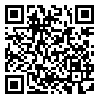Volume 17, Issue 101 (2020)
FSCT 2020, 17(101): 59-70 |
Back to browse issues page
Download citation:
BibTeX | RIS | EndNote | Medlars | ProCite | Reference Manager | RefWorks
Send citation to:



BibTeX | RIS | EndNote | Medlars | ProCite | Reference Manager | RefWorks
Send citation to:
emamifar A, Mohamadizadeh M. Influence of sonication and antimicrobial packaging-based nano-ZnO on inactivation of S. cerevisiae and E. coli in strawberry juice during storage. FSCT 2020; 17 (101) :59-70
URL: http://fsct.modares.ac.ir/article-7-41146-en.html
URL: http://fsct.modares.ac.ir/article-7-41146-en.html
1- Department of Food Sciences and Technology, Bu-Ali Sina University, Hamedan, Iran , a.emamifar@basu.ac.ir
2- Department of Food Science and Technology, Azad University of Kurdistan, Iran
2- Department of Food Science and Technology, Azad University of Kurdistan, Iran
Abstract: (4328 Views)
The beneficial impact of coupling sonication with 400 W and 24 kHz (4, and 8 min) with LDPE antimicrobial nanocomposite packaging containing nano-ZnO (3:100 w/w) (Pure packaging + US 4, Pure packaging + US 12, Nano packaging + US 4, Nano Packaging + US 12, and Pure packaging (Control)) on inactivation of inoculated saccharomyces cerevisiae (spoilage index) and E.coli (pathogen index) in strawberry juices during 4, 8, 12, 16., and 20 days (4 °C), was evaluated. Ultrasound technology (both 4 and 12 min) significantly (p < 0.05) reduced the population of saccharomyces cerevisiae and E.coli. Also, the D-value of S. cerevisiae was higher than E. coli in strawberry juice indicating its higher resistance to sonication. Application of Nano Packaging + US 12 showed the highest-ranked antimicrobial activity to the other sample and control on the population of the both S. cerevisiae and E. coli inoculated in strawberry juice during 20 days of storage. These achievements paved the way for hurdle technology applications involving combination of antimicrobial packaging containing nano-ZnO with short time sonication in retarding of microbial growth in strawberry juice during cold storage (4 °C).
Article Type: Original Research |
Subject:
Nanotechnology in the food industry (nanoparticles, nanocapsulations, nanomolies, etc.)
Received: 2020/03/3 | Accepted: 2020/05/2 | Published: 2020/05/30
Received: 2020/03/3 | Accepted: 2020/05/2 | Published: 2020/05/30
Send email to the article author
| Rights and permissions | |
 |
This work is licensed under a Creative Commons Attribution-NonCommercial 4.0 International License. |







